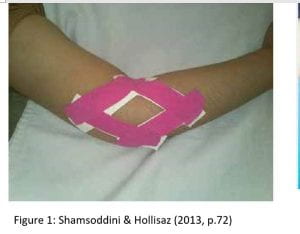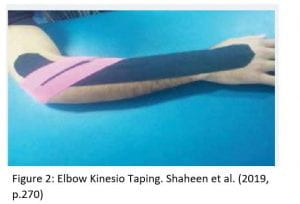Running total of hours: 107.5
Patient 1 and 2 – Craniosacral Therapy
The first two patients were babies of just 4 weeks old who presented with infantile colic. This condition is prevalent in almost a quarter of young babies and is “a clinical condition accompanied by repeated and prolonged crying with difficulties to soothe to unsatisfied physiological needs” (Castejón-Castejón et al., 2019, p.1).
These sessions were to perform craniosacral therapy on the babies. I have previously shadowed other sessions which have incorporated treatment of this nature on adults, however I had never experienced a session with new born babies and felt very sceptical about the efficacy of this treatment; is this evidence based?
When reflecting on this treatment, I realised not only that as therapists we were treating the infant, but that we were providing a type of therapy to the mother too, in the form of talking. There was a large focus on how the mother, baby and family were coping with the colic and much of the session was spend talking with the mother about breastfeeding and other issues surrounding becoming a new mother. As mothers ourselves, Katrina and I were both able to offer support by listening and sharing our own experiences of breastfeeding and I felt that this offered another dimension to the treatment session above that of the craniosacral therapy itself; a means of social and therapeutic contact for the mother at a vulnerable stage in her life as well as a treatment for the physiological aspects of the babies’ colic condition.
From my research I have found research supporting craniosacral therapy as safe and effective in the treatment of infantile colic, with reported improvements in crying and sleep (Castejón-Castejón et al., 2019).
Infant craniosacral therapy is beyond my scope of treatment and in order to practice this therapy, I would need to undergo specific training at a later date. From patient feedback on the positive effects of this modality, I would not rule this out as a possible area of progression further into my career as a sports therapist.
Patient 3 – Lateral Epicondylitis
Patient Overview – this patient was a follow patient who has been treated for spinal dysfunction, scoliosis.
After a follow up assessment on the patient’s back and elbow by both the osteopath and myself, my supervisor gave me the responsibility of treating this patient. The patient was happy for me to treat and to learn from session.
Before the start of treatment, I wanted to measure the patient’s wrist extensor strength as an objective measure and as I have done previously in the clinic and as used as a valid measure in many studies on the treatment of lateral epicondylitis (Shaheen, Alarab and Ahmad, 2019; Shamsoddini & Hollisaz, 2013). In order to do this I used a grip strength devise, also known as a hand help dynamometer whereby each wrist was tested for grip strength in kilograms (kg) and compared to bilaterally and also noted for future sessions for progression measures.
It has been previously highlighted that differences in grip strength scores depends on the methods of testing; some studies tested with the elbow at 90° flexion, others in extension, with varying grip strength increases reported (Shamsoddini & Hollisaz, 2013). This is important to acknowledge as I need to be consistent my testing protocol.
There was only a slight discrepancy between the two wrists but as the patient is at the later stages of his rehabilitation, this is to be expected. The goal here was to increase his strength so that he can develop symmetry in bilateral wrists and to further reduce his levels of pain, as he was still experiencing aching and pain in strenuous activity.
From previous treatments in the clinic, I have some knowledge of exercises to work through with the patient and feel confident in the effectiveness of manual therapy treatments of this condition. A review by Piper et al. (2016) on the effectiveness of soft tissue therapy on musculoskeletal injuries found that although myofascial release and therapeutic massage has limited supporting evidence on it’s effectiveness on a range of soft tissue injuries, it was found to be especially effective in the treatment of lateral epicondylitis. Muscle Energy Techniques were also found to be an effective in this same review and as such I was able to use both treatment modalities with more confidence in my rationale. Shaheen et al. (2019) conducted a study on 20 subjects, testing the effectiveness of a range of treatment modalities including therapeutic ultrasound, k-tape and exercise programs, finding all to show significant reductions in pain and increase in grip strength.
Other studies have found strengthening exercise programs to be effective when used as a single treatment option (Raman, MacDermid and Grewal, 2012; Shamsoddini & Hollisaz, 2013) and also taping as an additional treatment modality to aid in the reducing pain and increasing strength in the wrist extensors (Shamsoddini & Hollisaz, 2013).
At present, the patient was using a strap as given to him by Katrina the osteopath, however he had reported this as ineffective as it did not maintain the correct position during strenuous activity. In this instance, it was useful to come up with an alternative method of taping, such as kinesiology taping, as there is plenty of recommendations though evidence-based research on the use of this type of tape in this scenario.
For example, Shamsoddini & Hollisaz (2013) found that kinesiology taping, applied as shown in figure 1, was effective in the reduction of pain and increased grip strength in affected arms and Shaheen et al. (2019) found that the kinesiology tape, as shown in figure 2, was also effective. The two tapes are very different in their application but regardless of how it is applied, it may be that the positive effects are credited to the presence of tape on the extensor muscles as opposed to its mechanical alignment, as proposedly the positive effects may mostly be the results of altered pain perception and nociceptive adaptations (Shamsoddini & Hollisaz, 2013).
The patient was taught how to apply his own tape so that he did not have to return to the clinic just for reapplication.
Exercises were performed at the end of the session and I derived a program of exercises for the patient to take home.
The physiological reasoning behind the use of eccentric exercises for lateral epicondylitis is similar to that of therapeutic ultrasound, which has also been found as an effective treatment for this condition, in that the strengthening of the muscle tendon stimulates collagen production and improves collagen alignment as well as increased blood flow for more efficient healing (Shaheen et al., 2019).
Exercises were prescribed; 3 repetitions of 10-15 sets for up to 12 weeks as suggested as being the most effective treatment by Raman et al. (2012). The exercises were as follows,
ball squeezes, resistance band isometric and isotonic exercises in multidimensional planes, bar grip twists/towel twists. Extensor and flexion stretching was also given to the patient.
References –
Castejón-Castejón, M., Murcia-González, M. A., Martínez Gil, J. L., Todri, J., Suárez Rancel, M., Lena, O., & Chillón-Martínez, R. (2019). Effectiveness of craniosacral therapy in the treatment of infantile colic. A randomized controlled trial. Complementary Therapies in Medicine, 47(September 2018), 102164. https://doi.org/10.1016/j.ctim.2019.07.023
Piper, S., Shearer, H. M., Côté, P., Wong, J. J., Yu, H., Varatharajan, S., … Taylor-Vaisey, A. L. (2016). The effectiveness of soft-tissue therapy for the management of musculoskeletal disorders and injuries of the upper and lower extremities: A systematic review by the Ontario Protocol for Traffic Injury management (OPTIMa) collaboration. Manual Therapy, 21, 18–34. https://doi.org/10.1016/j.math.2015.08.011
Raman, J., MacDermid, J. C., & Grewal, R. (2012). Effectiveness of different methods of resistance exercises in lateral epicondylosis – A systematic review. Journal of Hand Therapy. https://doi.org/10.1016/j.jht.2011.09.001
Shaheen, H., Alarab, A., & S Ahmad, M. (2019). Effectiveness of therapeutic ultrasound and kinesio tape in treatment of tennis elbow. Journal of Novel Physiotherapy and Rehabilitation, 3(1), 025–033. https://doi.org/10.29328/journal.jnpr.1001025
Shamsoddini, A., & Hollisaz, M. T. (2013). Effects of taping on pain, grip strength and wrist extension force in patients with tennis elbow. Trauma Monthly. https://doi.org/10.5812/traumamon.12450


